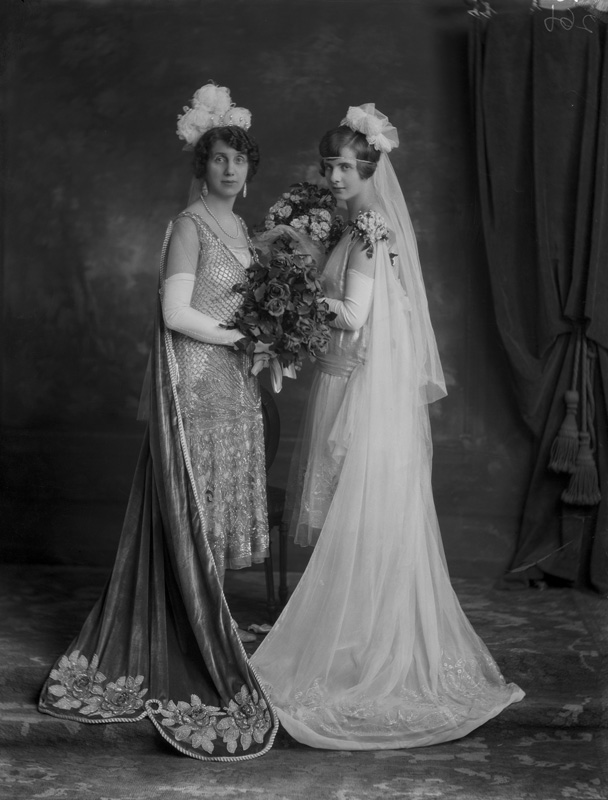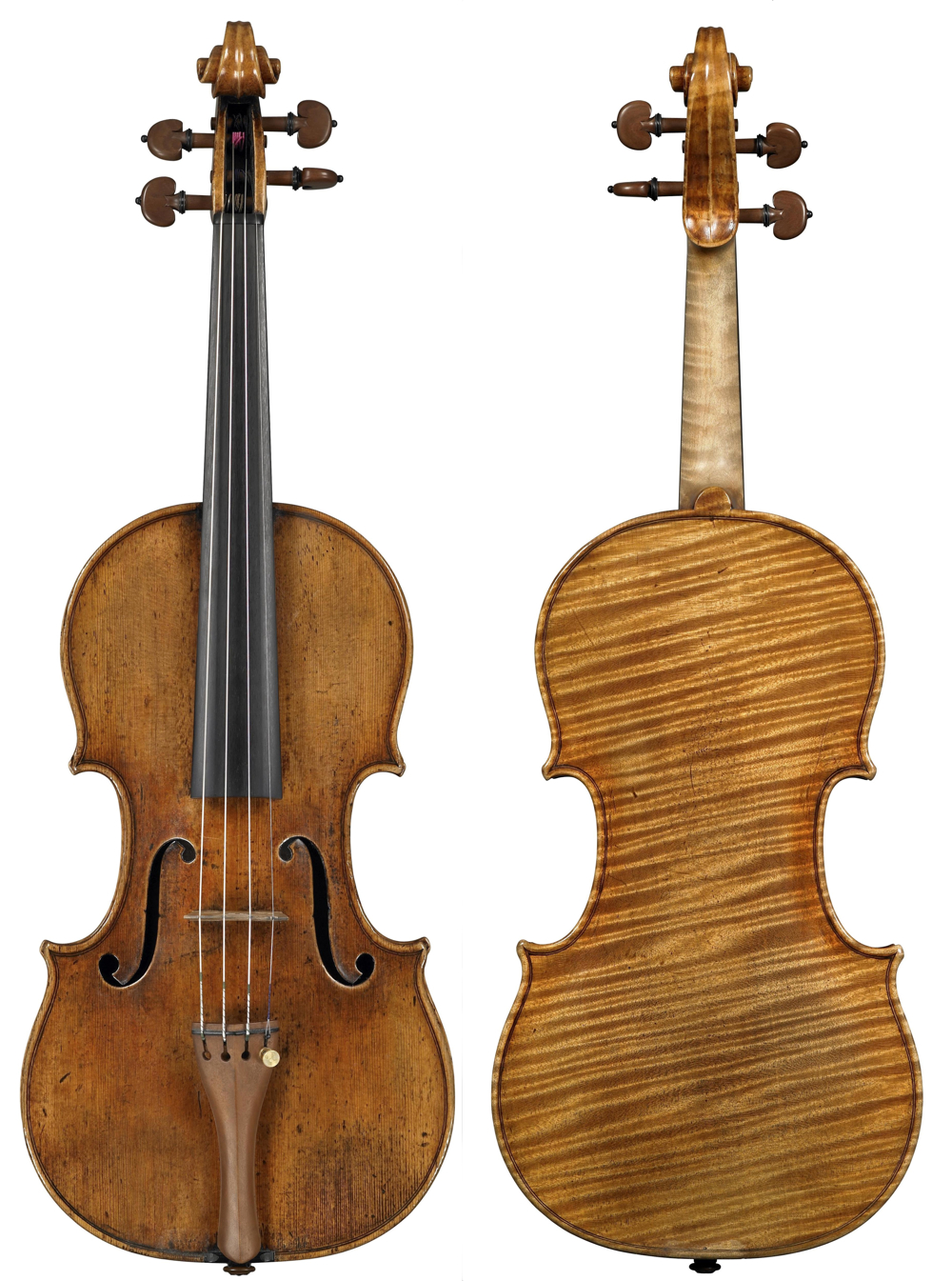Not long ago the world’s media reported the story of a brilliant virtuoso who had to let go of his Stradivari violin after 13 successful years. The violin in question was the ‘Lady Inchiquin’; the soloist was Frank Peter Zimmermann. We decided to explore the history of this fine instrument and what caused Zimmerman to part with it.
The ‘Lady Inchiquin’ was built by Antonio Stradivari in 1711 during his golden period and bears its original label, ‘Antonius Stradivarius Cremonensis / Faciebat Anno 1711.’ [1], [2] If 1711 as its production date is clear, its history is a different matter as it has been repeatedly muddled with another Strad, the ‘Parke’ of the same year. Ernst Doring was the first to notice that the histories of the two violins had been conflated. While describing the ‘Lady Inchiquin’ he stated: ‘This violin has been referred to as the ‘Kreisler-Parke’ Stradivari. The violin is listed in Goodkind under ‘Parke, Cho-Ming Sin’ with a provenance that appears to be crossed with the ‘Parke’ Stradivari of 1711.’ [3]
The mistake was repeated by Henley, whose description of the ‘Parke’ reads: ‘Originally owned by William Cramer and others. In the possession of Fritz Kreisler for a number of years. […] Later belonged to Lord Inchequin, and bought by a Mr. Aufenart in 1948 from Puttick & Simpson’s.’ [4] In fact Henley had mixed up at least three instruments! Although Fritz Kreisler owned three Stradivaris (the 1711 ‘Earl of Plymouth, Kreisler’, the 1733 ‘Huberman, Kreisler’, and the 1734 ‘Lord Amherst of Hackney’), there is no written proof to confirm that he owned or even played either the ‘Parke’ or the ‘Lady Inchiquin’. And, as we shall see, it was the ‘Lady Inchiquin’ that was auctioned at Puttick & Simpson’s and purchased by Mr Aufenart.
Even the dealers Bein & Fushi confused the two instruments in their 1980 certificate for the ‘Lady Inchiquin’, stating: ‘The instrument is known as The Parke, so named for one of its early owners. The instrument is referred to in the Hills’ work on Antonio Stradivari.’ [5] In fact, the Hills mentioned the ‘Parke’, not the ‘Lady Inchiquin’ in their book. [6] These mistakes are even more puzzling if we consider that, although crafted in the same year, the violins can hardly be mistaken visually because the ‘Lady Inchiquin’ has a one-piece back, while the ‘Parke’ has a two-piece one.
With its wide edges and sturdy corners, the ‘Lady Inchiquin’ is a fine example of Stradivari’s work from the 1710–15 period. The one-piece back is of attractive maple quarter-sawn and defined by broad flames that slant upwards to the right. The ribs appear to have been cut from the same log as the back wood. The head presents stronger, deep flames and was described by the Hills as being ‘particularly fine.’ [7] The table is made of two pieces of medium-grained spruce. The well cut and extended miter joint of the purfling adheres perfectly to straight, slightly shorter corners. Stradivari’s exceptional skills as a craftsman are emphasized in the execution of the f-holes, which are quite close and upright, with upper and lower holes that are almost perfectly circular. The Hills noted that: ‘The belly of the violin has at some time been slightly browned with some fresh varnish.’ [8] The original varnish is still visible, though, and it is typical of Stradivari’s golden period, characterized by a light red-orange color over a deep golden ground. The violin was restored in the second half of the 1980s. [9]

Ethel Jane, Lady Inchiquin (left) with her daughter Griselda in 1926. Photo: Lafayette, © National Portrait Gallery, London
This instrument is named after its former owner, Ethel Jane Foster (18??–1940). She was the second of three daughters of Hannah Jane Stansfield (1842–1918) and Major Johnston Jonas Foster (1827–1880) of Moor Park, near Ludow, Shropshire. On January 14, 1896 she married Lucius William O’Brien at Richard’s Castle, near Ludow. O’Brien (1864–1929), 15th Baron of Inchiquin, was a member of the venerable O’Brien family, which was one of the few native Gaelic families of royal blood to descend directly from Brian Bóruma, High King of Ireland in the 11th century. Richard’s Castle became the couple’s English residence and Ethel Jane was raised to Baroness of Inchiquin on April 9, 1900.
A few years before this marriage took place, the violin was in the possession of the Hills, who sold it to a Mrs Foster of Moor Park, Ludlow, on March 15, 1889. It is highly likely that the Mrs Foster the Hills referred to was Hannah Jane, the mother of Ethel Jane, and the violin was possibly a present to Ethel Jane.
Lady Inchiquin owned her namesake instrument until her death in Ireland, at Dromoland Castle, Newmarket-upon-Fergus, on June 5, 1940. Apparently her eldest son, Sir Donough Edward Foster O’Brien (1897–1968), 16th Baron of Inchiquin, kept the violin for some years and finally auctioned it at Puttick & Simpson in London on April 1, 1948. On that occasion the ‘Lady Inchiquin’ was bought by Mr Aufenart (sometimes spelled as Aufenast) of Switzerland.
In the late 1960s the instrument was part of the renowned collection of Cho-Ming Sin of Hong Kong. According to Walter Scholefield, former violinist of the Berlin Philharmonic, Sin decided at some point to buy the ‘King Joseph’ Guarneri of 1737. [10] In order to acquire this violin, Sin sold two of his instruments. One of these was the ‘Lady Inchiquin’, which was brought to Bein & Fushi, who sold it to Scholefield for $210,000 in 1978.
Five years later the then 18-year-old violinist Frank Peter Zimmermann was in Berlin to give a concert with the Berlin Philharmonic. On that occasion he met Scholefield and the ‘Lady Inchiquin’. Was it love at first sight? Not exactly. During this first encounter, the reaction of the young violinist was lukewarm. Although impressed by the deep, dark tones of the instrument, which reminded him of Guarneri ‘del Gesù’, Zimmermann regretted that the Strad was acoustically not at its best and commented that he ‘could not play with it’. [11] However, a couple of years later Zimmermann had the chance to play the violin again, after it had been restored, and he realized immediately that he had found ‘his’ violin!

The son of Lady Inchiquin, Donough Edward Foster O’Brien, auctioned the Stradivari in 1948. Photo: Bassano Ltd © National Portrait Gallery, London
In 2001 the Düsseldorf-based bank WestLB AG (Western German State Bank), which had sponsored Zimmermann since the beginning of his career, bought the ‘Lady Inchiquin’ from Scholefield for $2.8 million and gave it to Zimmermann with a ten-year free loan agreement at the end of which he could buy the violin for an exclusive purchase-option price. Unfortunately, some years later, on June 30, 2012, the bank failed and its rich art collection, which also includes Stradivari’s 1684 ‘Croall, McEwen’ and a cello by Giuseppe Rocca, was assigned to Portigon AG.
Zimmermann’s contract expired in 2012 and was renewed by Portigon initially until August 2014 and then for an additional six months. [12] It now seems that Portigon will be forced to sell its assets in order to pay off all unsettled debts [13] and although protracted negotiations took place in which Zimmermann offered to purchase the violin for €4.9 million [14], 13 the bank’s asking price is around €5.8 million. [15] Therefore, a few days before his contract expired in February 2015, Zimmermann returned the ‘Lady Inchiquin’.
In January 2016 it was announced that Zimmermann had found a new instrument: Stradivari’s 1727 ‘General Dupont, Grumiaux’, owned by the entrepreneur, philanthropist and amateur violinist Mr Yu. [16] For Zimmermann the new loan is good news and he has expressed how grateful he is to his benefactor. Nevertheless, he also commented about the ‘Lady Inchiquin’: ‘I fell in love with her voice and I absorbed it for 13 years. I absolutely want to play it again. And I hope that I will get her back, one day.’ [17]
UPDATE, July 2016: the North Rhine-Westphalia government in Germany has now bought the ‘Lady Inchiquin’, and has confirmed that it plans to hand the violin back to Zimmermann on long-term loan.
Thanks to Portigon AG and Roberto Regazzi for assistance with source materials.
A longer version of this feature was published in the May 2016 edition of ‘das Orchester’ magazine.
Alessandra Barabaschi is an Italian art historian and has authored several books including the four-volume ‘Antonius Stradivarius’.
Notes
[1] Hart, George, The Violin: Its Famous Makers and Their Imitators, First edition 1875, Reprint Dulau & Co., London, 1909, p. 196.
[2] Goodkind, Herbert K., Violin Iconography of Antonio Stradivari 1644–1737, Larchmont, New York, 1972, p. 21.
[3] Doring, E. N., How Many Strads?, Bein & Fushi, Chicago, 1945, reprint 1999, p. 389.
[4] Henley, William, Antonio Stradivari, master luthier, Cremona, Italy, 1644–1737, Amati Publishing Ltd, Brighton, Sussex, 1961, p. 53.
[5] Bein & Fushi certificate, Chicago, January 26, 1980.
[6] Hill, William Henry; Hill, Arthur Frederick; Hill, Alfred Ebsworth, Antonio Stradivari. His Life and Work (1644–1737), W.E. Hill & Sons, London, 1902, reprint 1963, Dover, New York, p. 59.
[7] Hill, W.E. & Sons certificate, London, March 15, 1889.
[8] Hill, W.E. & Sons certificate, op. cit.
[9] Interview with Walter Scholefield in the programme Kulturzeit, 3sat, Mainz, March 9, 2015.
[10] Interview with Walter Scholefield, op. cit.
[11] Interview with Walter Scholefield, op. cit.
[12] Rossmann, Andreas, Streit um West-LB-Kunst Die Geigenfrist läuft ab, Frankfurter Allgemeine Zeitung online, Frankfurt, February 19, 2015 [13] Gropp, Rose-Maria, Kunstsammlung gerettet? Kehrtwende in NRW, Frankfurter Allgemeine Zeitung online, Frankfurt, January 22, 2015.
[14] Schwering, Markus, Stargeiger trennt sich von ‘Lady Inchiquin’ Frank Peter Zimmermann gibt millionenteure Stradivari zurück, Kölner Stadt-Anzeiger online, Cologne, February 21, 2015.
[15] Smith, Jennifer; Houston-Waesch, Monica, Performer at New York Philharmonic to Play Without Prized Stradivarius, The Wall Street Journal, New York, February 26, 2015.
[16] Chinese collector buys 1727 Stradivarius violin, The Strad, London, February 2015, p. 14. [17] Büning, Eleonore, Eine goldene Stradivari hören Sie sofort, Frankfurter Allgemeine Zeitung online, Frankfurt, January 21, 2016.
